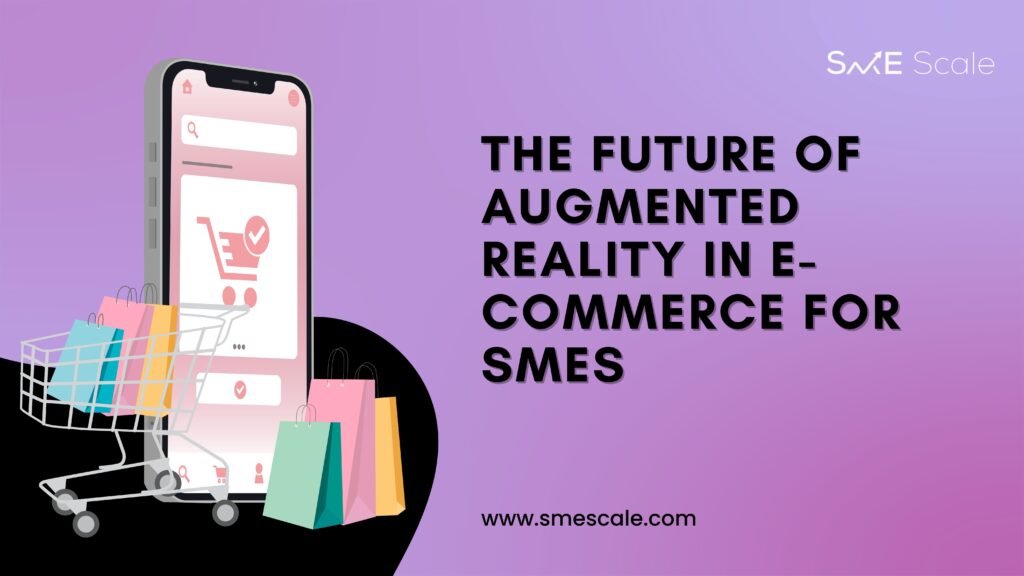
Augmented Reality (AR) is transforming the world of e-commerce, providing immersive experiences that engage customers in ways that were unimaginable just a few years ago. For small and medium enterprises (SMEs), AR presents a unique opportunity to enhance their customer experience, bridge the gap between online and in-store shopping, and ultimately increase sales. With AR technology becoming more accessible, SMEs are poised to leverage it to compete with larger corporations. This blog explores the future of AR in e-commerce for SMEs, using a real-life case study to highlight how it can be integrated into marketing strategies and the psychology behind why it works.
Why Augmented Reality Matters for SMEs
The rise of e-commerce has drastically changed how consumers shop. However, one persistent limitation has been the inability to physically interact with products. AR solves this problem by allowing customers to visualize products in their own environment through their mobile devices or computers. For SMEs, integrating AR into their e-commerce strategy offers several benefits:
Enhanced Customer Experience: AR allows customers to “try before they buy” by virtually placing products in their homes, trying on clothing, or visualizing how makeup will look on their skin. This interactive experience can lead to higher customer satisfaction and reduced return rates.
Increased Engagement: AR can make shopping more engaging and enjoyable. Interactive experiences are more likely to capture and hold customers’ attention, leading to longer site visits and higher conversion rates.
Building Customer Trust: By offering a more transparent shopping experience, AR helps build trust. Customers feel more confident about their purchases when they can virtually interact with products, which is especially important for SMEs trying to build brand loyalty.
Real-Life Case Study: Warby Parker
Warby Parker, a well-known eyewear company, embraced AR to solve a significant challenge in online shopping—customers’ inability to try on glasses before purchasing. Using AR technology, Warby Parker developed a virtual try-on tool that allows customers to see how different frames look on their faces in real-time through their smartphone camera.
How It Worked:
The AR Try-On Experience: Customers visiting Warby Parker’s mobile app can use their camera to virtually try on different styles of glasses. The app uses AR to map the glasses onto the customer’s face, providing an accurate representation of how the frames will look.
Increased Engagement: The AR experience increased user engagement, as customers spent more time browsing different frames and experimenting with styles. The tool also created an immersive and fun shopping experience, encouraging users to share their virtual try-ons on social media.
Improved Conversions and Reduced Returns: By allowing customers to see how the glasses would look in real-time, Warby Parker was able to reduce return rates while also boosting conversions. Customers felt more confident in their choices, which led to fewer second-guessing and returns after purchase.
The Results:
Warby Parker’s AR strategy was highly successful. They saw increased customer engagement and improved sales conversion rates, all while minimizing product returns. The brand also benefited from increased social media exposure, as users shared their AR try-on experiences, helping the company reach new potential customers through organic word-of-mouth marketing.
The Psychology Behind AR in E-Commerce
The success of AR in e-commerce can be explained through several psychological principles:
Visual Decision-Making: Research shows that humans are highly visual creatures. When shopping online, the lack of physical interaction with a product can create uncertainty. AR bridges this gap by providing a visual experience that closely mimics in-store shopping, allowing customers to make more informed decisions.
Immersion and Engagement: AR creates an immersive experience, pulling customers deeper into the shopping journey. This leads to longer interactions with the brand, which increases the likelihood of making a purchase. The feeling of control and personalization that AR offers—such as customizing or visualizing products in real-time—can trigger higher engagement and satisfaction.
Reducing Cognitive Dissonance: Cognitive dissonance occurs when there is a disconnect between a customer’s expectations and reality. AR helps reduce this by allowing customers to virtually interact with products before purchasing, ensuring their expectations align with the final product. This reduces the chances of buyer’s remorse and product returns.
Trust and Transparency: AR can enhance the transparency of e-commerce transactions by allowing customers to experience the product as realistically as possible in a virtual environment. This increased transparency builds trust, which is essential for SMEs that are still working to establish their reputation.
The Future of AR for SMEs in E-Commerce
As AR technology continues to evolve, it will become even more accessible to SMEs. Here are some future trends and opportunities for small businesses:
Mobile Integration: With smartphones continuing to dominate the e-commerce landscape, AR apps will become a standard feature for SMEs looking to provide a better shopping experience. By integrating AR tools into their mobile apps or websites, SMEs can compete with larger brands.
Social Media AR: Platforms like Instagram and Snapchat already offer AR filters, which can be leveraged by SMEs for marketing purposes. SMEs can create AR filters that allow customers to try products, such as makeup or accessories, and share these experiences with their social media followers.
Personalized Shopping: The future of AR will also involve more personalized shopping experiences. AR tools will likely use AI to analyze customer preferences and offer tailored product suggestions, making the shopping experience more personalized and relevant.
Conclusion
For SMEs, embracing augmented reality in e-commerce is not just a competitive advantage—it’s becoming a necessity. AR helps SMEs offer interactive and engaging customer experiences, increasing customer trust and reducing return rates. As demonstrated by Warby Parker, AR can drive customer engagement, improve conversions, and enhance the overall shopping experience.
The future of AR in e-commerce for SMEs is bright. With the ongoing development of technology and the increasing use of smartphones, AR will become a standard feature in online shopping, helping small businesses compete with larger companies and providing customers with an immersive, personalized experience that bridges the gap between the physical and digital shopping worlds.

